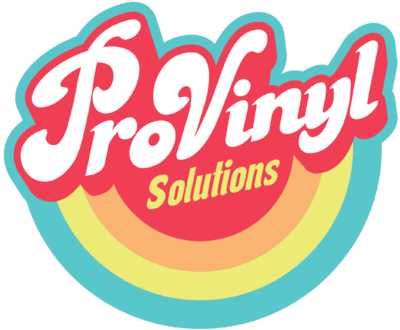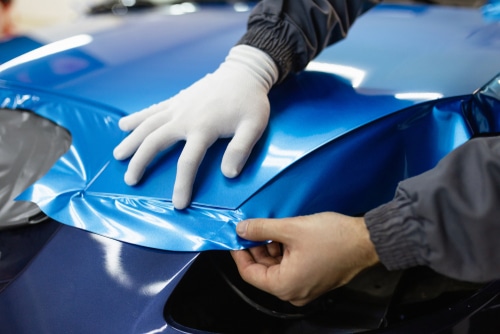You may have a few questions if you’re looking to get your car wrapped or painted. What’s the difference between car wrapping and painting? Which is overall best? How much does it cost? In this guide, we’ll answer those questions, plus more!
When it comes to painting your car, there are a few factors that you need to consider. If you’re looking at doing it yourself, you’ll want to know how much it will cost before starting work on the project. The second is time; how long will this take? And lastly, durability: How long can it stay fresh?
In general terms, painting is more expensive than wrapping because of labor costs and materials required for both jobs. It also takes longer because they need proper training for someone else’s labor force to do the job right.
Understanding Car Wrapping
Car wrapping is the process of applying vinyl to the exterior of a vehicle to change its appearance. It’s economical and durable to dress up your car, truck, motorcycle, or boat for less than half the painting cost.
Wrapping can be done at home by anyone with essential tools and experience working with materials like vinyl plastic sheets or adhesive tape. You don’t need special equipment, just essential hand tools like scissors, a plastic sheeting roller, painter’s tape, and even gloves.
What Is Car Painting?
Car painting is applying a new coat of paint to your car. The job can be done by hand or machine, and it can be used as soon as a scratch, or other damage occurs on your vehicle. A new coat of paint will cover up blemishes and further damage, giving you a fresh look and making it easier for people to spot your car in traffic.
This isn’t just about covering up scratches; it’s also about ensuring that all parts of your vehicle are adequately painted to match each other. For example, if you have two colors in one area, say black on top but grey underneath, you’ll want both colors painted evenly across both surfaces.
Options For Car Wrapping
There are a variety of options for car wrapping. Common car wrap types include partial, complete, and carbon fiber wraps.
Partial Wraps:
These are the least expensive option with less coverage and detail. They can be purchased in sheets or rolls, depending on the size of your car. Suppose you don’t want to do too much work yourself.
In that case, this is a good choice because it gives you an idea about what kind of look you’re going for before committing to anything more detailed or intricate.t
Full Wraps:
The name speaks for itself quite well. A complete wrap covers the entire car, altering its color and appearance. Most frequently, a solid color is used to accomplish this.
It is less expensive than a paint job and can also be undone. These come in various thicknesses so that they can handle heavier vehicles or more significant areas like trucks and SUVs with thicker glass windows than cars.
Carbon Fiber Wraps
Vinyl is often used for vehicle covers; however, several exceptions exist. For instance, some wraps are constructed of carbon fibers. The result is a matte, greyish-black color and an intriguing texture for the car.
Additionally, it is pretty durable and robust. So if you like how it looks, a carbon fiber wrap is perfect for a protective wrap.
Options For Car Painting
There are a few different types of paint that you can use on your car.
Enamel:
This type of paint is the most durable and rugged, but it’s also the most expensive option. It contains multiple coats of clear coat to protect against chipping and peeling away from the surface, which makes it easier to clean up than other more porous paints like acrylic or lacquer.
It is frequently utilized in situations where the paint doesn’t need to last very long or won’t be subjected to a harsh life because it is typically only available in simple premixed colors.
Since Synthetic Enamel is a one-stage paint, neither a hardener nor a baking step is necessary. Hardeners are frequently used with acrylic enamel paints to boost durability and speed up drying.
You can typically obtain acrylic enamel paint mixed to match the color of your car, even though it naturally comes in premixed colors. To give the vehicle a durable, hard finish, acrylic enamel paint can be applied in one or two stages and frequently requires baking.
Urethane:
The most excellent commercially available paint option right now is probably urethane finishes, which come in any color you could choose. Color-matching urethane paint is an excellent technique to ensure that touch-ups or partial resprays resemble paint that has probably faded due to sun damage. It is readily available in any color and can be made up to fit your needs.
Urethane paint is, as expected, much more resistant to UV ray deterioration than other, more traditional paints. Because urethane coatings always need to be hardened, they dry quickly and are durable.
Matte Paint:
Today, matte coatings are particularly popular among luxury vehicles, producing a flat appearance instead of a shiny finish. Regardless of the weather, they often make your automobile seem fantastic.
Matte paints are somewhat pricey and require a lot of upkeep, and they need particular maintenance and more straightforward, non-reactive products on the surface. Additionally, they do not conceal scratches, as glossy coatings do.
Acrylic Lacquer
The original automotive paint, acrylic lacquer, was once the only choice. High gloss acrylic lacquer is the simplest type of paint to use.
Its short shelf life means that it will rapidly deteriorate over time, particularly during the summer when it is exposed to sunlight. This is the only drawback.
What Are The Differences Between Car wrapping and painting?
Here are some of the differences to consider when deciding to either wrap or paint your car:
Cost
Car wrapping is a lot cheaper than painting. Wrapping does not require multiple layers of colors because it uses only a single layer of material.
Wrapping a car req
Customization
uires no unique materials or tools to be purchased for installation, which means lower costs.
Time Consumed
Car wrapping is much quicker because it only requires one layer of material around the entire car, protecting it from outside elements such as sunlight and rainwater. Car wrapping does not require additional prep work or painting steps, so it’s great for those who want to save time and effort!
Applying a wrap can take hours to a few days, unlike a quality paint job with a significant 2 to 4-week time frame.
Upkeep
Wrapping your car offers low maintenance as it can last for a very long time, up to years, without any damage or issues. This means there are no chances of rusting or peeling off any paint when moisture (such as rain) is exposed. Scratches and marks on a wrapped car can be repaired quickly, unlike paint jobs that need to be touched up every time.
Quality paint jobs need regular repainting as they get damaged with time and due to changing weather conditions.
Durability
Car Wraps tend to be more durable than paint jobs. Typically, Wraps are thicker and without pores, making the car more resistant to damage. They are also easier to maintain and do not require waxing.
Customization
The ability to employ different colors and various effects to create a highly personalized look makes car wraps quite adaptable. Having the ability to take off the wrap is another flexible feature.
You may remove the complete wrap and restore the automobile to its previous state if you wish to reuse it or get it ready for sale.
If you want it to be, the commitment is brief.
Painting a car is a more permanent commitment with fewer customization options or flexibility.
Which Is Overall Best?
Are you looking to get your car wrapped or paint it? The answer depends on a variety of factors.
If you want to make your car look new again, it’s probably best to go with the painting. However, wrapping is more flexible and comes with more options. If you’re unsure what paint job would work best for your vehicle, look online or talk with the professional who will do the work before deciding which route is right for you!
Conclusion
As you can see, there are many factors to consider when choosing between car wrapping and painting to extend your vehicle’s life. While they both have their advantages and disadvantages, one thing is clear: no matter which option you choose: it will be an investment that pays off in years to come!
Pro Vinyl Solutions can help you with your car wrapping or painting job. Just let us know what you need, and our trained experts will do the job.
–ProVinyl Solutions


Recent Comments